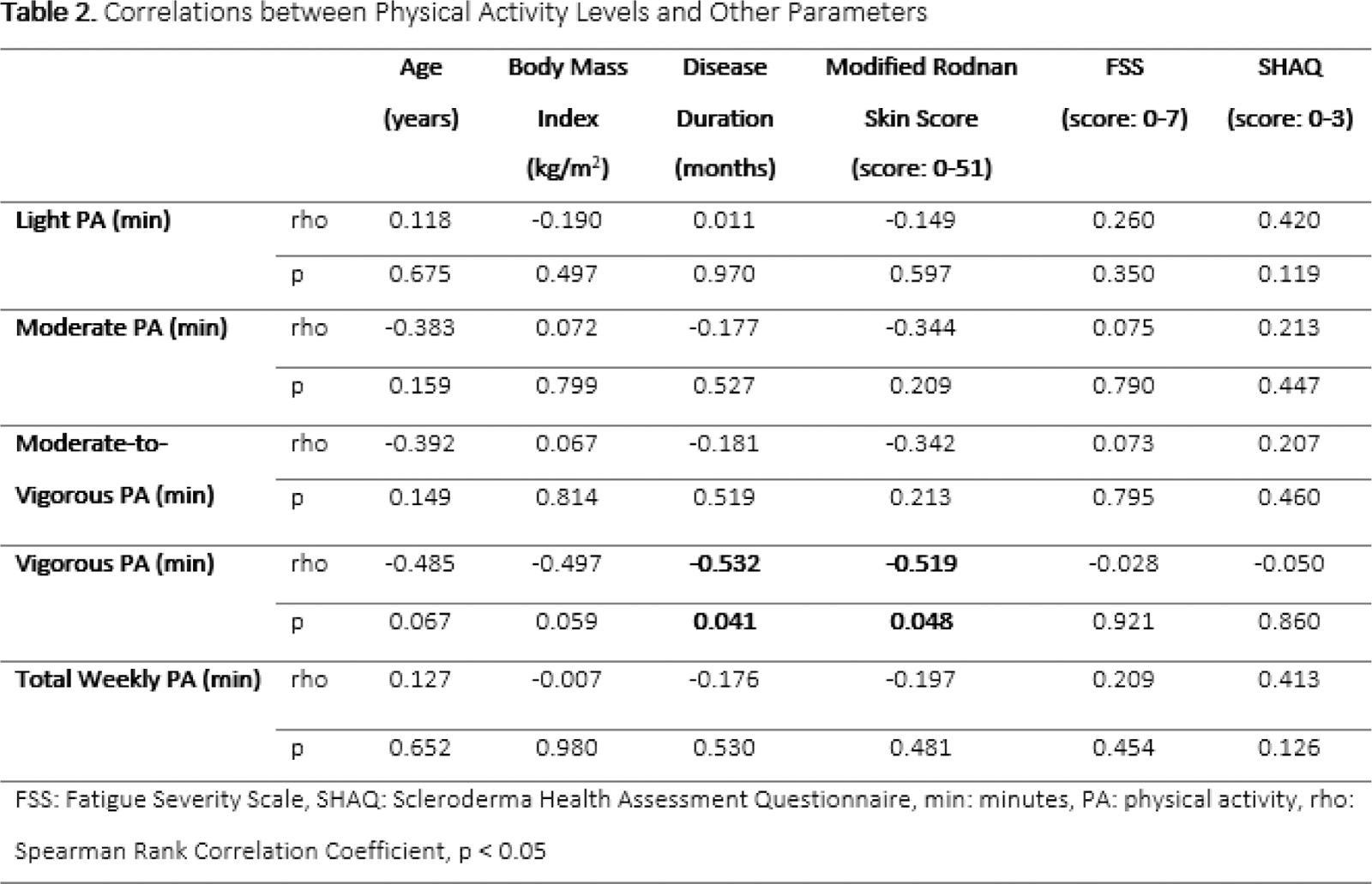

Background: The health benefits of regular physical activity in managing chronic diseases are well-known, and the World Health Organization (WHO) recommends 150 minutes of moderate-intensity physical activity per week. While studies reported that weekly physical activity levels (assessed with self-reported measures) are lower in individuals with systemic sclerosis (SSc) compared to the general population [1], further research utilizing objective measurement of physical activity in SSc is needed.
Objectives: To objectively assess physical activity levels and to detect their potential associations with clinical parameters in adults with SSc.
Methods: Physical activity levels of 15 adults with SSc and 15 age- and sex-matched healthy controls (12 women in each group) were recorded for seven days using a waist-mounted accelerometer (ActiGraph wGT3X-BT). Physical characteristics (sex, age, body mass index) of all participants were recorded. Disease-related characteristics (skin thickening level, disease duration), fatigue (Fatigue Severity Scale, FSS), and disease-related health status (Scleroderma Health Assessment Questionnaire, SHAQ) were assessed in participants with SSc.
Results: Age (SSc group: 49 (40/45) years vs. control group: 44 (41/47) years, p = 0.663) and body mass index (SSc group: 28.4 (20.2/31.6) kg/m² vs. control group: 26.5 (24.5/34.4) kg/m², p=0.548) were similar between groups. For adults with SSc; 10 had localized SSc, 3 had diffuse SSc, and 2 had sine scleroderma. Median disease duration was 72 (48/132) months, the Modified Rodnan Skin Score was 8 (5/28), the FSS score was 5 (2.8/5.7), and the SHAQ score was 0.6 (0.1/1.3) for SSc group. Three adults had interstitial lung disease in SSc group. Notably, 53% of adults with SSc did not meet the WHO physical activity recommendations. Adults with SSc had lower physical activity levels compared to controls, but this difference was not statistically significant (p>0.05, Table 1). Moderate negative significant correlations were found between the time spent in vigorous physical activity and disease duration (rho: -0.532) and skin involvement severity (rho= -0.519) in SSc group (p<0.05, Table 2). No significant correlations were identified between other parameters and physical activity (p>0.05, Table 2).
Conclusion: According to our results, targeted interventions may be critically important for improving reduced physical activity in SSc, thus, all health professionals should exert optimal effort for achieving recommended levels of physical activity for these individuals.
REFERENCES: [1] Liem SIE, Meessen JMTA, Wolterbeek R, Ajmone Marsan N, Ninaber MK, Vliet Vlieland TPM, de Vries-Bouwstra JK. Physical activity in patients with systemic sclerosis. Rheumatol Int. 2018;38(3):443-453.


Acknowledgements: NIL.
Disclosure of Interests: None declared.
© The Authors 2025. This abstract is an open access article published in Annals of Rheumatic Diseases under the CC BY-NC-ND license (